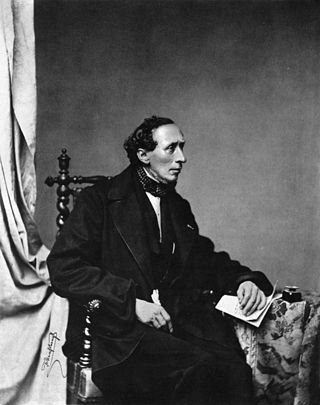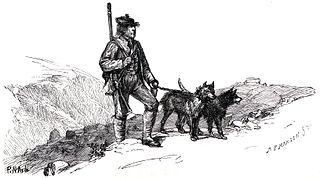
Symphony No. 44 in E minor, Hoboken I/44, was completed in 1772 by Joseph Haydn. It is popularly known as Trauer. An apocryphal story relates that Haydn asked for the slow movement of this symphony to be played at his funeral.

Music for Strings, Percussion and Celesta, Sz. 106, BB 114 is one of the best-known compositions by the Hungarian composer Béla Bartók. Commissioned by Paul Sacher to celebrate the tenth anniversary of the chamber orchestra Basler Kammerorchester, the score is dated September 7, 1936.

Norwegian Folktales is a collection of Norwegian folktales and legends by Peter Christen Asbjørnsen and Jørgen Moe. It is also known as Asbjørnsen and Moe, after the collectors.
The Young Person's Guide to the Orchestra, Op. 34, is a 1945 musical composition by Benjamin Britten with a subtitle Variations and Fugue on a Theme of Purcell. It was based on the second movement, "Rondeau", of the Abdelazer suite. It was originally commissioned for the British educational documentary film called Instruments of the Orchestra released on 29 November 1946, directed by Muir Mathieson and featuring the London Symphony Orchestra conducted by Malcolm Sargent; Sargent also conducted the concert première on 15 October 1946 with the Liverpool Philharmonic in the Philharmonic Hall, Liverpool, England.

"The Shadow" is a literary fairy tale by Danish poet and author Hans Christian Andersen. The tale was first published in 1847.
"Concerning Hobbits" is a piece by composer Howard Shore derived from The Lord of the Rings: The Fellowship of the Ring soundtrack. It is a concert suite of the music of the Hobbits, arranged from the music heard in the film during the early Shire scenes, and features the various themes and leitmotifs composed for the Shire and Hobbits; it is intended to evoke feelings of peace. It is also the title of one of the sections of the prologue to The Lord of the Rings by J. R. R. Tolkien. Excerpts of the piece can be heard during an extended scene in the 2012 film The Hobbit: An Unexpected Journey, where it was tracked intentionally. The piece has become synonymous with the Shire and Hobbiton themes.
An Alpine Symphony, Op. 64, is a tone poem for large orchestra written by German composer Richard Strauss in 1915. It is one of Strauss's largest non-operatic works; the score calls for about 125 players and a typical performance usually lasts around 50 minutes. The program of An Alpine Symphony depicts the experiences of eleven hours spent climbing an Alpine mountain.

Ein Heldenleben, Op. 40, is a tone poem by Richard Strauss. The work was completed in 1898. It was his eighth work in the genre, and exceeded any of its predecessors in its orchestral demands. Generally agreed to be autobiographical in nature despite contradictory statements on the matter by the composer, the work contains more than thirty quotations from Strauss's earlier works, including Also sprach Zarathustra, Till Eulenspiegel, Don Quixote, Don Juan, and Death and Transfiguration.
On two occasions, Felix Mendelssohn composed music for William Shakespeare's play A Midsummer Night's Dream. First in 1826, near the start of his career, he wrote a concert overture. Later, in 1842, only a few years before his death, he wrote incidental music for a production of the play, into which he incorporated the existing overture. The incidental music includes the famous "Wedding March".

"The Swineherd" is a literary fairy tale by Hans Christian Andersen about a prince who disguises himself as a swineherd to win an arrogant princess. The tale was first published December 20, 1841 by C. A. Reitzel in Copenhagen, Denmark in Fairy Tales Told for Children. New Collection. Third Booklet. The tale appears to be original with Andersen though similar tales are known. "The Swineherd" has been adapted to other media.

"The Red Shoes" is a literary fairy tale by Danish poet and author Hans Christian Andersen first published by C.A. Reitzel in Copenhagen 7 April 1845 in New Fairy Tales. First Volume. Third Collection. Other tales in the volume include "The Elf Mound" (Elverhøi), "The Jumpers" (Springfyrene), "The Shepherdess and the Chimney Sweep", and "Holger Danske".
The Overture to an Italian Comedy for orchestra was composed in 1936 by Australian composer Arthur Benjamin; it was first performed in London on 2 March 1937, under the direction of Gordon Jacob.

The Variations and Fugue on a Theme by Mozart, Op. 132, is a set of variations for orchestra composed in 1914 by Max Reger; the composer conducted the premiere in Berlin on 5 February 1915. He later produced a version for two pianos, Op. 132a, where the Variation 8 ("Moderato") is completely different.

This is a list of published works by Hans Christian Andersen. The list has been supplemented with a few important posthumous editions of his works; the year given in each entry refers to the first Danish edition. They are all in the public domain because Andersen died over 100 years ago.

"The Snowman" is a literary fairy tale by Hans Christian Andersen about a snowman who falls in love with a stove. It was published by C.A. Reitzel in Copenhagen as Sneemanden on 2 March 1861. Andersen biographer Jackie Wullschlager describes the tale as a lyrical and poignant complement to Andersen's "The Fir-Tree" of December 1844.

Per Gynt is a Norwegian fairy tale which originated in the traditional region of Gudbrandsdal.

New Fairy Tales. First Volume is a collection of nine fairy tales by Hans Christian Andersen. The tales were published in a series of three installments by C. A. Reitzel in Copenhagen, Denmark between November 1843 and April 1845.

Fairy Tales Told for Children. New Collection is a collection of ten fairy tales by Hans Christian Andersen. The tales were published in a series of three installments by C. A. Reitzel in Copenhagen, Denmark between October 1838 and December 1841.
Pyrus is a julekalender TV series broadcast on the Danish television station TV2 at Christmas time in Denmark. Initially broadcast as four semi-independent seasons, the series consists of Alletiders Jul (1994), Alletiders Nisse (1995), Alletiders Julemand (1997), and Alletiders Eventyr (2000), as well as a spin-off feature film, Pyrus på Pletten, which premiered on Christmas Eve 2000.
"The Tallow Candle" is a 700-word literary fairytale by Danish writer Hans Christian Andersen (1805–1875).












